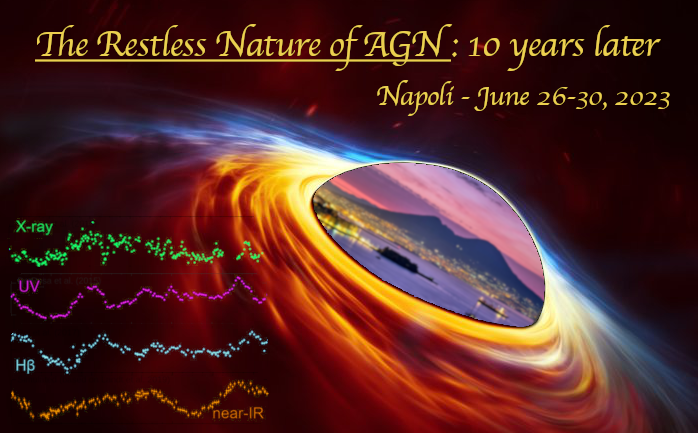Speaker
Description
We present our results investigating the correlation between the variability of UV/optical light curves and the physical parameters for a sample of about 7500 AGN selected from the Spectroscopic IDentification of eROSITA Sources (SPIDERS) AGN catalog. To study the UV/optical variability, we use well-sampled g and r-band light curves obtained from the ZTF survey. We first calculate the fractional excess variance in the light curves and then model the light curves using a Damped Random Walk (DRW) process to extract the variability amplitudes and the damping timescales. Our results show that the variability amplitudes in the g and r bands are strongly correlated. We find a weak correlation between the damping amplitudes of the light curves and known physical parameters such as redshift, SMBH mass, luminosity, and Eddington ratio. Further, we also do not find a strong correlation between the damping timescale and the physical parameters, namely the luminosity, SMBH mass, and the Eddington ratio. We also generate the Power Spectrum Density (PSD) of these light curves to extract the relation between the PSD slopes and the above-mentioned physical parameters. Further study of the optical variability characteristics and their correlation with physical parameters will contribute to a better understanding of their relationship.

